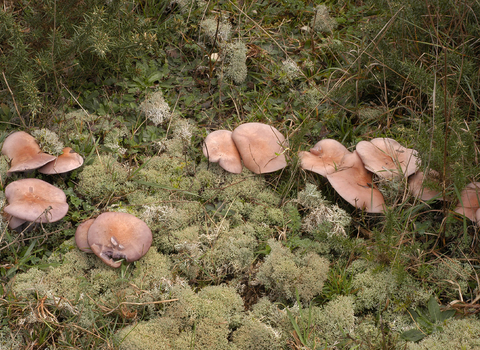
Wood blewit ©Dr Malcolm Storey
Wood blewit
The lilac-blue wood blewit grows in woodland and parkland. It is edible and gathering wild food can be fun, but it's best to do it with an expert - pop along to a Wildlife Trust event to try it.
Enw gwyddonol
Lepista nudaPryd i'w gweld
September to DecemberSpecies information
Category
Ystadegau
Cap diameter: 6-12cmStem height: 5-9cm
Common.
